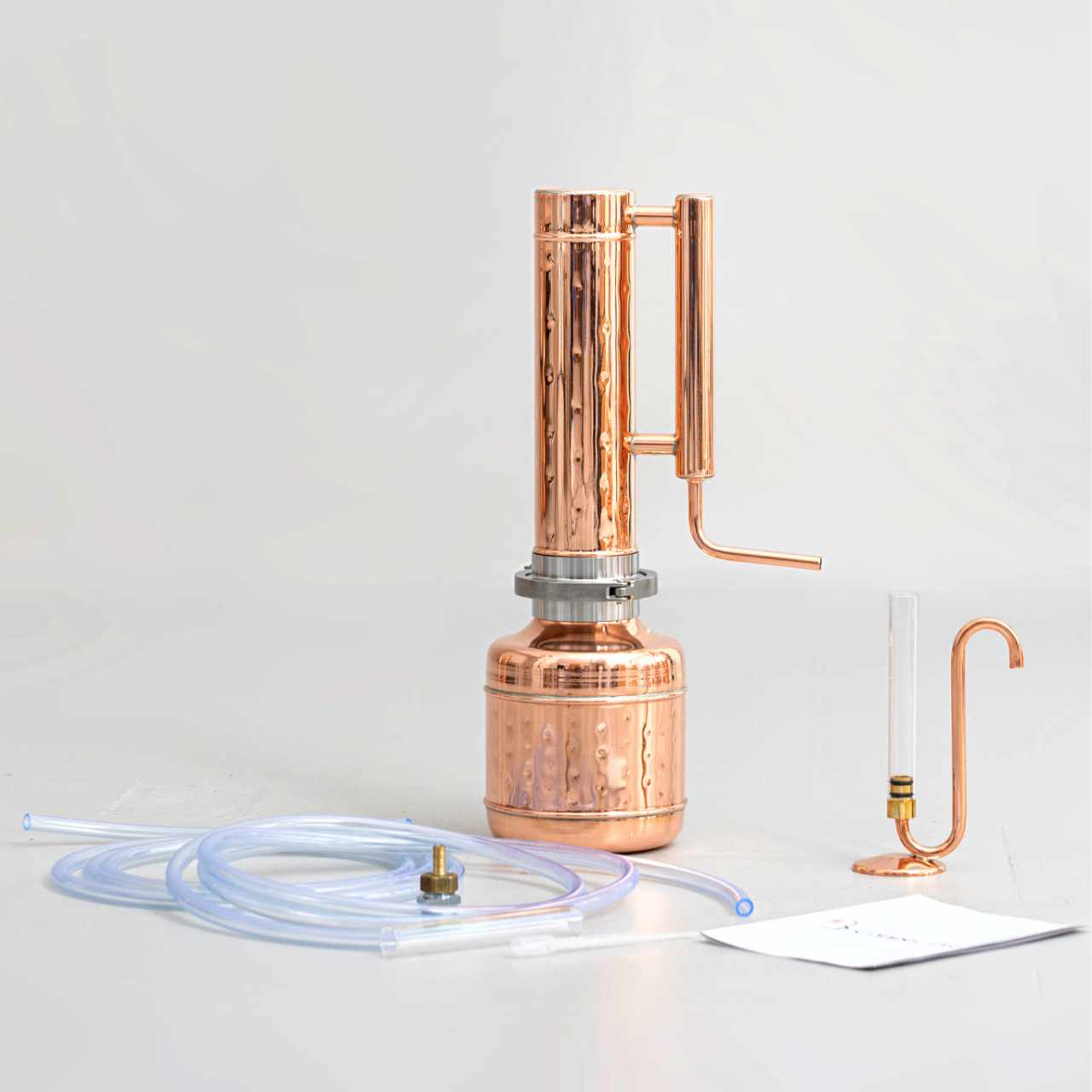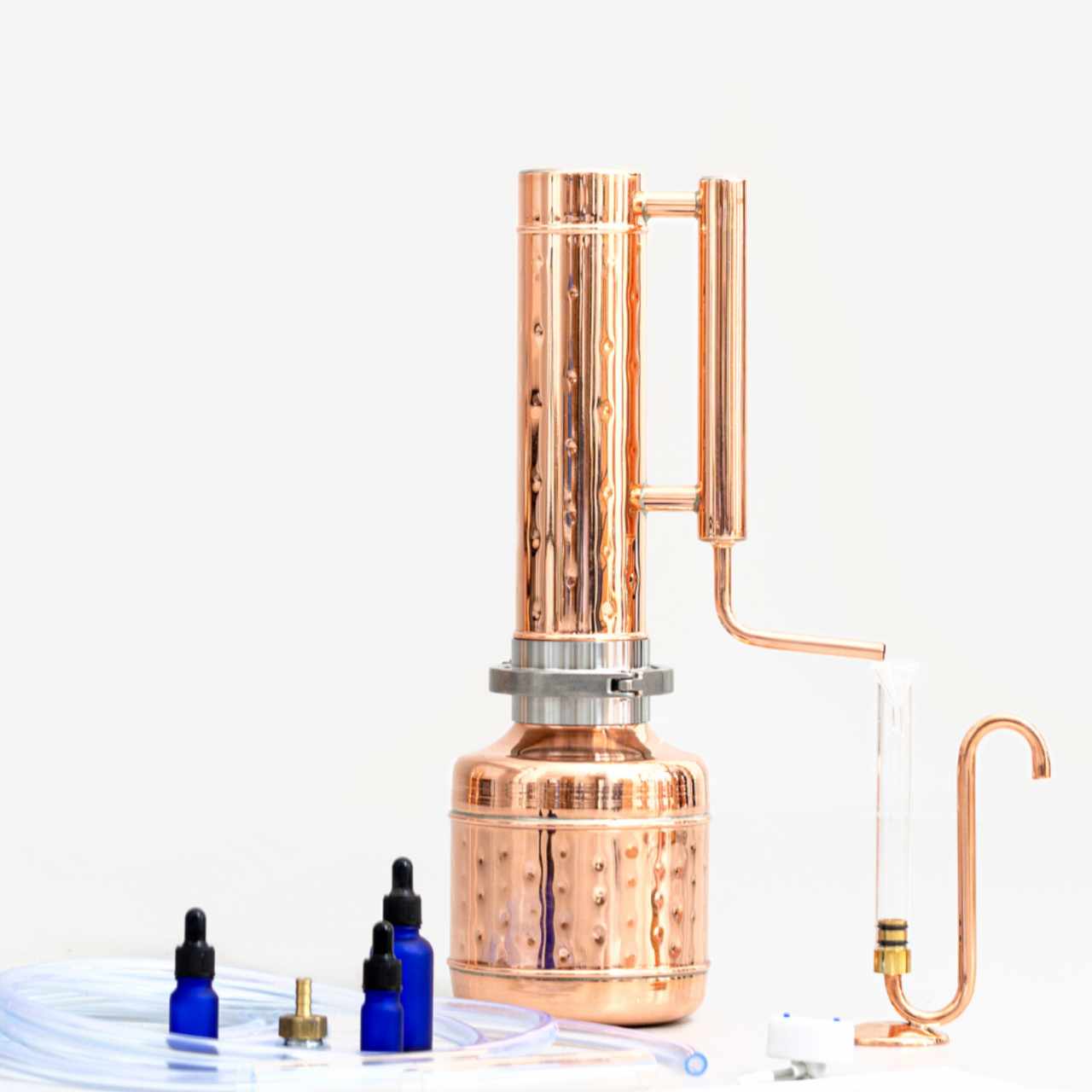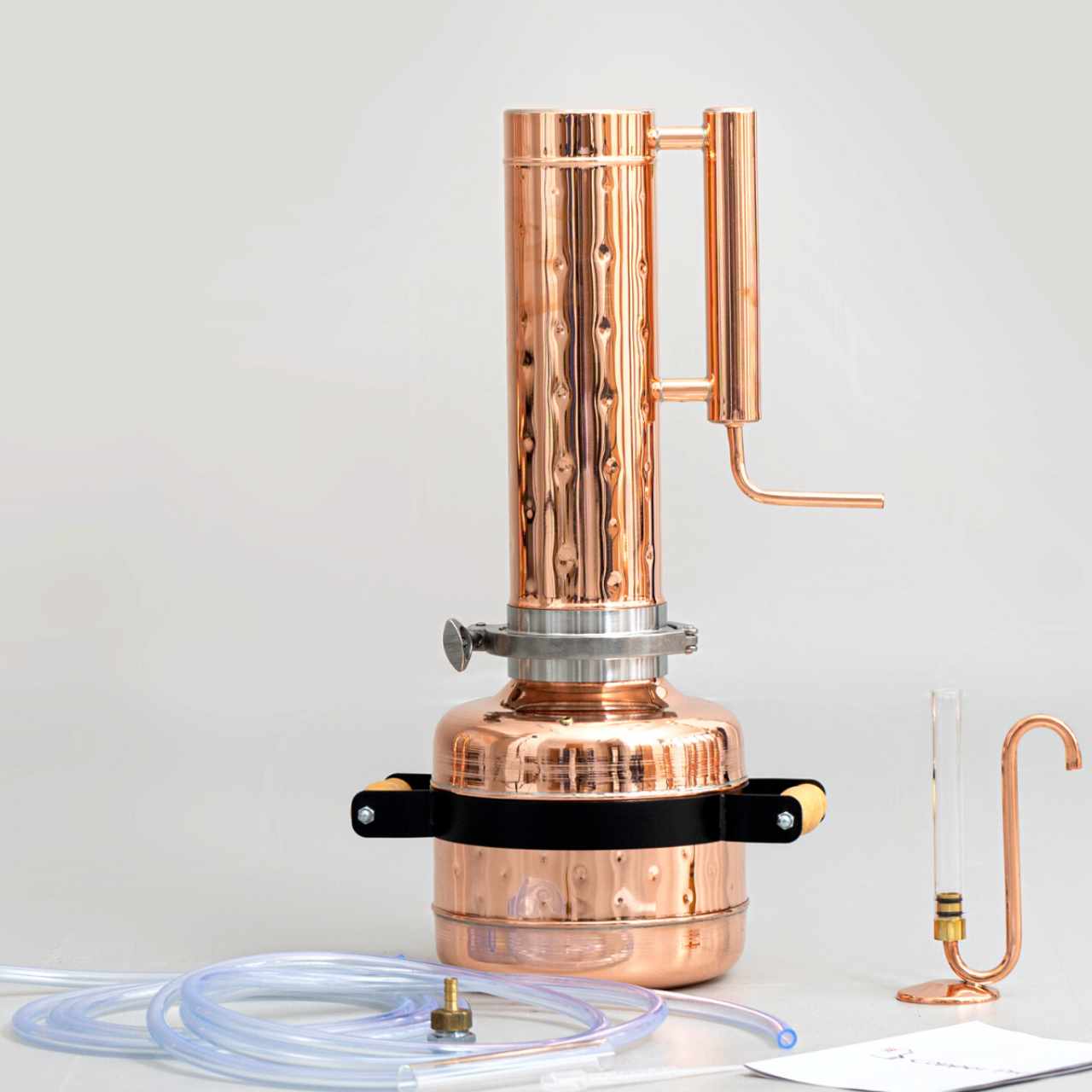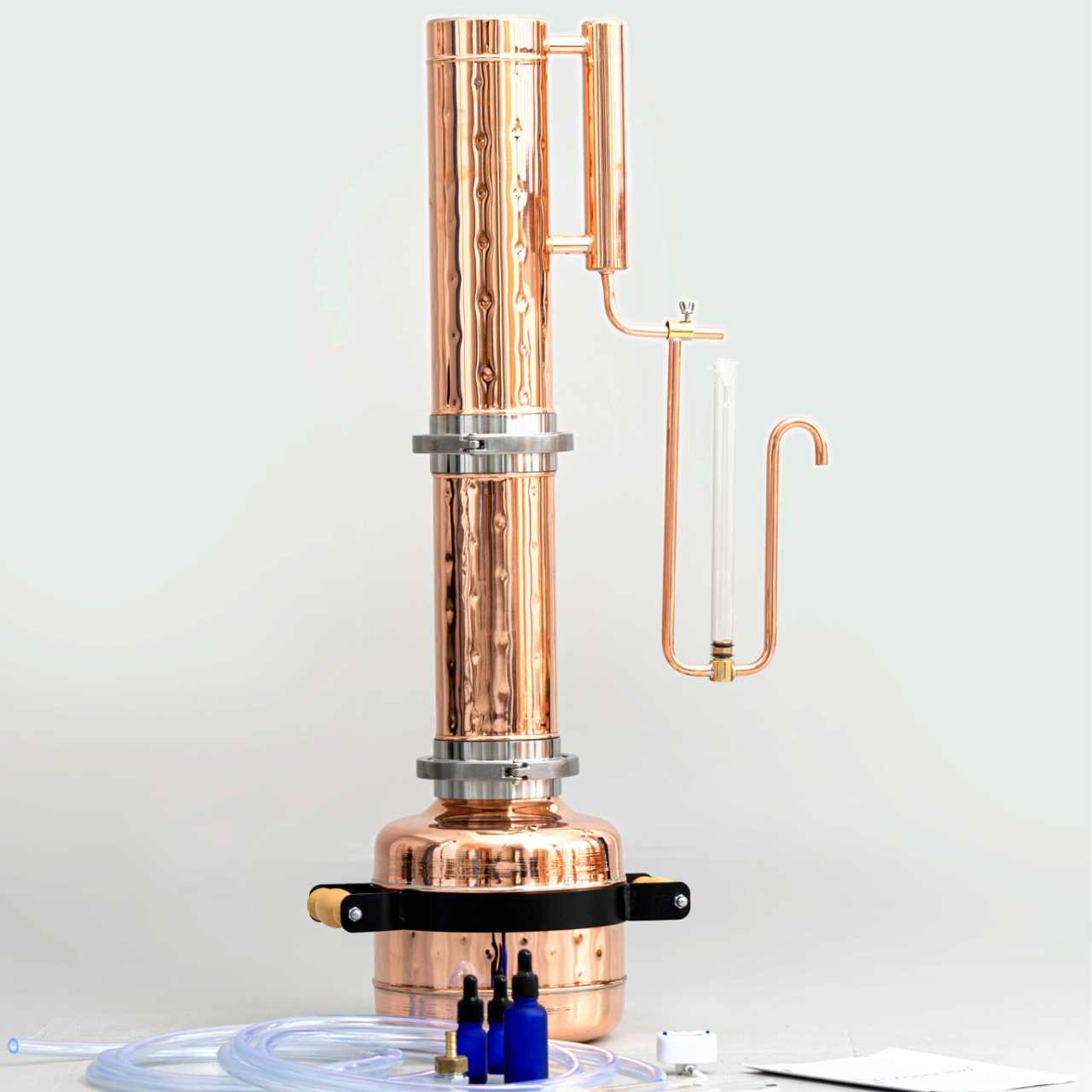
Table of content
How to Choose Essential Oils for Headache Relie
1. Essential oil for Stress or Tension Headaches
Stress or Tension Headaches Relief Blends
2. Essential oils for sinus headache
Sinus or Allergy Headaches Relief Blends
3. Essential oils for migraine headaches
Migraine Headaches Relief Blends
4. Essential oils for cluster headaches
Cluster Headaches Relief Blends
5. Essential oils for hormonal headaches
Hormone Headaches Relief Blends
10 Best Essential Oils for Headache Pain Relief
Headache Relief Essential Oil Recipes
Headaches are one of the most common pain-related disorders in the world. Each year, they cost people and insurance companies several billion dollars in medications, doctor visits, and other treatments. The high cost of treatment and medication leads some headache sufferers seek a more natural alternative to medications that sometimes have nasty side effects.
How to Choose Essential Oils for Headache Relie
Because some essential oils are useful for general headache pain relief, they’re included in many, if not most, headache and pain relief blends. Peppermint and lavender fall into this category.
If headaches plague you, discovering what sets if off is the most important thing. If you take this first step, then crafting the right remedy becomes easier.
Here are the most common triggers:
- Stress
- Lack of sleep or change in sleep pattern
- Dehydration (drink more water!)
- Weather changes
- Poor diet
- Skipping meals
- Processed meats with nitrates
- Hormonal changes
- Caffeine
- Alcohol
- Allergies can cause sinus headaches or migraines
- Soy products
- Overpowering odors
Some people also find that certain food colorings or flavored coffees cause headaches. Regardless, become aware of your headache triggers so you can reduce or prevent them.
For those headaches you can’t prevent, essential oils may prove beneficial. Choosing the right essential oils in a roller bottle or salve can help you stop a headache in its tracks.
Headaches and Their Causes
Once you’ve figured out what triggers your headache and what type it is, deciding on essential oils for your blend is easier. Here’s a handy table to help you decide:
1. Essential oil for Stress or Tension Headaches

Both sides of your head hurt. It can also feel like a band around your head. Tension or stress headaches sometimes include pain in the neck and upper shoulders and scalp sensitivity.
Try to reduce stress response with jasmine, rosemary, lavender, and peppermint.
Stress or Tension Headaches Relief Blends
Relaxing Lavender
|
Mood-Lifting
|
6 drops lavender |
4 drops frankincense |
2 drops jasmine |
2 drops peppermint |
2 drops frankincense |
2 drops basil |
2 drops rosemary |
2. Essential oils for sinus headache

Your forehead, behind your eyes, nose, cheekbones, and sometimes even your teeth hurt. Allergies are common causes of sinus headaches.
Try using eucalyptus, peppermint, rosemary, and tea tree oil to encourage the fluid to drain.
Sinus or Allergy Headaches Relief Blends
Sinus & Allergy Relief |
Minty-Fresh
|
|
4 drops peppermint |
6 drops peppermint |
|
4 drops eucalyptus |
2 drops tea tree |
|
2 drops basil |
2 drops eucalyptus |
3. Essential oils for migraine headaches

Throbbing or pulsing pain on only one side of your head. Sensitivity to light and sound, nausea, vomiting, or neck stiffness/pain.
Start with lavender. If you also have allergies, consider including eucalyptus, tea tree, peppermint, and lemon
Migraine Headaches Relief Blends
Soothing Migraine
|
|
4 drops lavender |
|
2 drops rosemary |
|
2 drops ginger |
|
2 drops Roman chamomile |
4. Essential oils for cluster headaches

Usually severely painful on one side of the head and behind the eye/near the temple. Droopy eyelid, excessive tearing, red eye, light sensitivity, swelling around one or both eyes, restlessness/agitation.
Lavender and peppermint may ease the symptoms. Also, try to reduce stress and inflammation using rosemary, frankincense, and rose geranium.
Cluster Headaches Relief Blends
Peppermint Cluster
|
|
3 drops peppermint |
|
3 drops eucalyptus |
|
2 drops ginger |
|
2 drops rosemary |
5. Essential oils for hormonal headaches

Hormone imbalances can trigger many types of headaches, including migraine.
Clary sage and frankincense essentials oil may help balance hormones.
Hormone Headaches Relief Blends
Hormone Support |
Hormone Support |
|
5 drops clary sage |
4 drops frankincense |
|
3 drops rose geranium |
2 drops rosemary |
|
2 drops lavender |
2 drops clary sage |
|
2 drops rose geranium |
Try these essential oil blends on your next headache. I’ve sorted them according to headache type, but remember that many headaches have similar triggers; therefore, the EOs you use for one may work equally well for another.
A .35 (26ml) ounce roller bottle is perfect for the following essential oil headache remedies. To start, fill it halfway with carrier oil, then add the essential oils. Sniff as you go, and adjust if needed. After you add the essential oils, fill the bottle with carrier oil and put the top on. Then, give it a good shake before you use it.
These recipes come in at about a 5% dilution. It’s on the higher end of “normal safe ranges,” but unless you’re using them every day it’s fine. If you need these on a daily basis, cut the total essential amount in half.
10 Best Essential Oils for Headache Pain Relief

Many of the essential oils I’ve included in my list offer relief from several different types of headaches. So, if an EO I suggest causes discomfort, substitute it for another one. Where available, we also linked to studies where the essential oil in question proved helpful to the study participants.
Lavender Essential Oil (Lavendula angustifolia)
There are several different lavender species in the Lavendula genus, and most in the store are either Lavendula angustifolia or a blend of several species. According to a study published in European Neurology [1], inhaling lavender essential helps relieve migraine headache pain.
Lavender essential oil is best for headaches caused by stress, tension, and migraines. Considered one of the safest during pregnancy.
Frankincense Essential Oil (Boswellia spp.)
Frankincense’s anti-inflammatory properties make it a popular essential oil for pain. People have used it for everything from stress reduction to hormone balancing, but the monoterpenes[2] it contains show some action against aches and pains.
The most common species available commercially are Boswellia carterii, Boswellia serrata, and Boswellia sacra. They have different price points and fragrance profiles. B. serrata is the least expensive, then B. carterii, and the most expensive is B. sacra.
Frankincense essential oil is best for headaches caused by stress, tension, and hormone balance.
Peppermint Essential Oil (Mentha piperita)
No headache remedy list is complete without at least a mention of peppermint. It’s one of the most popular headache remedies and has at least one double-blind, placebo-controlled study [3] to back it up.
Minty and refreshing, peppermint essential oil is as popular as lavender, and might be even better for headaches!
Peppermint essential oil is best for headaches caused by allergies, sinus congestion, stress, tension and relieves pain from cluster headaches.
Rosemary Essential Oil (Rosmarinus officinalis)
This evergreen grows easily and has dozens of culinary and medicinal uses. A 2018 study [4] showed that rosemary essential oil could improve circulation, reduce inflammation, and possibly reduce stress. It helps improve mental clarity and blends well with peppermint for an invigorating morning fragrance in the diffuser.
Rosemary essential oil is best for relieving pain caused by cluster headaches, hormone imbalances, stress, and tension.
Eucalyptus (Eucalyptus globulus)
Eucalyptus essential oil is common in natural decongestant rubs. Eucalyptus is popular for reducing congestion and is one of the best essential oils to include in a blend for congestion-related headaches. It pairs especially well with peppermint for sinus headaches [5].
Generally considered safe during pregnancy.
Tea Tree Oil (Maleleuca alternifolia)
Tea tree oil is a wonderful nasal decongestant and is some use as an alternative to antibiotics [6]. Used in a diffuser or carrier oil, it can help open up your sinuses, reducing pressure and the accompanying pain by allowing them to drain.
Note: Do not take tea tree oil internally—it is poisonous when ingested.
Ginger (Zingiber officinale)
While you probably know ginger as a fantastic anti-nausea food, the essential oil also helps reduce inflammation. It also seems to relieve anxiety; a 2010 study on ginger essential oil showed that it positively affected serotonin levels. [7]
Ginger essential oil is best for headaches caused by tension, anxiety, stress, and can relieve the nausea from migraines or pregnancy. Generally considered safe during pregnancy.
Rose Geranium (Pelargonium graveolens)
In a 2006 study[8], rose geranium and several other essential oils showed some effect on reducing inflammation. It also helps reduce stress, which is a major headache trigger. The same study included tea tree oil, frankincense, and several others, so it’s worth a read.
Rose geranium essential oil is best for headaches caused by stress and inflammation.
Jasmine (Jasminum officinale)
A luscious floral scent, jasmine can help improve your mood and relieve stress. Research indicates[9] that it may help with depression, chronic fatigue syndrome, menopause, and anxiety—all of which can cause headaches.
Jasmine comes with a caveat: Most jasmine oil you see on the market is labeled as fragrance, not essential oil. Jasmine fragrance oils typically have other things added to jasmine essential oil to make it smell like jasmine.
Jasmine essential oil is best for headaches caused by stress, poor sleep, chronic fatigue, and anxiety.
Clary Sage (Salvia sclarea)
This oil has some promise in relieving menstrual pain and may help balance hormones. It’s also a natural sedative and may help you improve sleep quality. Clary sage essential oil also seems to help reduce blood pressure and cortisol levels [10].
Clary sage essential oil is best for headaches caused by hormone imbalances and poor sleep.
Other Essential Oils to Relieve Headache Pain
- Thyme
- Oregano
- Orange
- Lemon
- Marjoram
- Cedarwood
- Basil
Headache Relief Essential Oil Recipes
Here are a few of my favorite roller bottle recipes. I used sweet almond oil as the carrier oil because its neutral scent doesn’t interfere with the essential oils—and because it’s a staple for many other DIY essential oil projects, there’s always some around. However, use what you have available that doesn’t have a strong odor—liquid coconut oil and jojoba are equally good.
Mix them with your chosen carrier oil and put them into roller bottles for easy use. If you prefer your headache relief in salve form, that’s an easy change to make with a solid-perfume base. Just add essential oils in the proper ratios.
Because essential oils are the highly concentrated essences of plants, less is more! If you don’t like the result, experiment by adding or subtracting a little of each in your blend.
- For an adult, diluting a total of 20-30 drops of your EO blend to one ounce of carrier oil is typically safe.
- For children, the concentration is much lower and 5-10 drops per ounce of carrier oil is considered safe.
Relieving Headaches During Pregnancy

Whether you should use essential oils during pregnancy is something of a controversy. Some worry that compounds can cross the placental barrier and cause problems—especially during the first three months.
In general, it’s probably best to minimize or eliminate most essential oils during pregnancy. There’s so much that we don’t know about their effects. Plus, some are downright dangerous for the baby.
However, there are a few that experts regard as safe. It’s those that I considered when designing this blend. Even so, check with your healthcare provider before using it.
|
Pregnancy Headache Relief |
|
6 drops lavender |
|
2 drops eucalyptus |
|
2 drops ginger |
Essential Oil Safety and Potential Side Effects
As with anything, there’s the potential for an adverse reaction. However, by following a few simple rules, essential oils are very safe.
- Dilute essential oils before use: It reduces the risk of a reaction. A few EOs are exceptions to this (tea tree, lavender), but many aromatherapists recommend diluting even the exceptions.
- Know your oils: Although some essential oils are safe to use internally, many are not safe.
- Patch test before regular use: Especially true if you have sensitive skin or allergies, before using a new and unfamiliar essential oil. Don’t use the oil if you experienced itching, redness, swelling, or pain where you did the patch test.
- Pets and children are more sensitive: When diffusing EOs, use smaller amounts of oils that can be irritants.
- Give yourself a break from the aromas: Overdoing it with highly potent aromas like essential oils can cause headaches and nausea. If you find that you get a headache when you walk into your bathroom because the place smells like a fragrance factory, it may be time to invest in a cabinet with doors.
Disclaimer: We aren’t doctors, and this information is purely educational. Personal responsibility is the other side of freedom, so check with your doctor before making any changes to your treatment or medical care.
References:
[1] Sasannejad, P., Saeedi, M., Shoeibi, A., Gorji, A., Abbasi, M., & Foroughipour, M. (2012). Lavender essential oil in the treatment of migraine headache: a placebo-controlled clinical trial. European neurology, 67(5), 288–291. https://doi.org/10.1159/000335249
[2] de Cássia da Silveira e Sá, R., Andrade, L. N., & de Sousa, D. P. (2013). A review on anti-inflammatory activity of monoterpenes. Molecules (Basel, Switzerland), 18(1), 1227–1254. https://doi.org/10.3390/molecules18011227
[3] Göbel, H., Fresenius, J., Heinze, A., Dworschak, M., & Soyka, D. (1996). Effektivität von Oleum menthae piperitae und von Paracetamol in der Therapie des Kopfschmerzes vom Spannungstyp [Effectiveness of Oleum menthae piperitae and paracetamol in therapy of headache of the tension type]. Der Nervenarzt, 67(8), 672–681. https://doi.org/10.1007/s001150050040
[4] Andrade, J. M., Faustino, C., Garcia, C., Ladeiras, D., Reis, C. P., & Rijo, P. (2018). Rosmarinus officinalisL.: an update review of its phytochemistry and biological activity. Future science OA, 4(4), FSO283. https://doi.org/10.4155/fsoa-2017-0124
[5] Göbel, H., Schmidt, G., & Soyka, D. (1994). Effect of peppermint and eucalyptus oil preparations on neurophysiological and experimental algesimetric headache parameters. Cephalalgia : an international journal of headache, 14(3), 228–182. https://doi.org/10.1046/j.1468-2982.1994.014003228.x
[6] Carson, C. F., Hammer, K. A., & Riley, T. V. (2006). Melaleuca alternifolia (Tea Tree) oil: a review of antimicrobial and other medicinal properties. Clinical microbiology reviews, 19(1), 50–62. https://doi.org/10.1128/CMR.19.1.50-62.2006
[7] Nievergelt, A., Huonker, P., Schoop, R., Altmann, K. H., & Gertsch, J. (2010). Identification of serotonin 5-HT1A receptor partial agonists in ginger. Bioorganic & medicinal chemistry, 18(9), 3345–3351. https://doi.org/10.1016/j.bmc.2010.02.062
[8] M.D. Standen,P.A. Connellan,D.N. Leach (2006). Natural killer cell activity and lymphocyte activation: Investigating the effects of a selection of essential oils and components in vitro. International Journal of Aromatherapy, https://doi.org/10.1016/j.ijat.2006.09.006
[9] Hongratanaworakit T. (2010). Stimulating effect of aromatherapy massage with jasmine oil. Natural product communications, 5(1), 157–162.a
[10] Lee, K. B., Cho, E., & Kang, Y. S. (2014). Changes in 5-hydroxytryptamine and cortisol plasma levels in menopausal women after inhalation of clary sage oil. Phytotherapy research : PTR, 28(11), 1599–1605. https://doi.org/10.1002/ptr.5163












![Essential oil extractor 0.53G (2L) - [Premium Kit] - Copper Pro](http://copper-pro.com/cdn/shop/files/essential-oil-extractor-053g-2l-premium-kit-127057.jpg?crop=center&height=1280&v=1740390471&width=1280)
Comments (0)
Back to Blog Posts